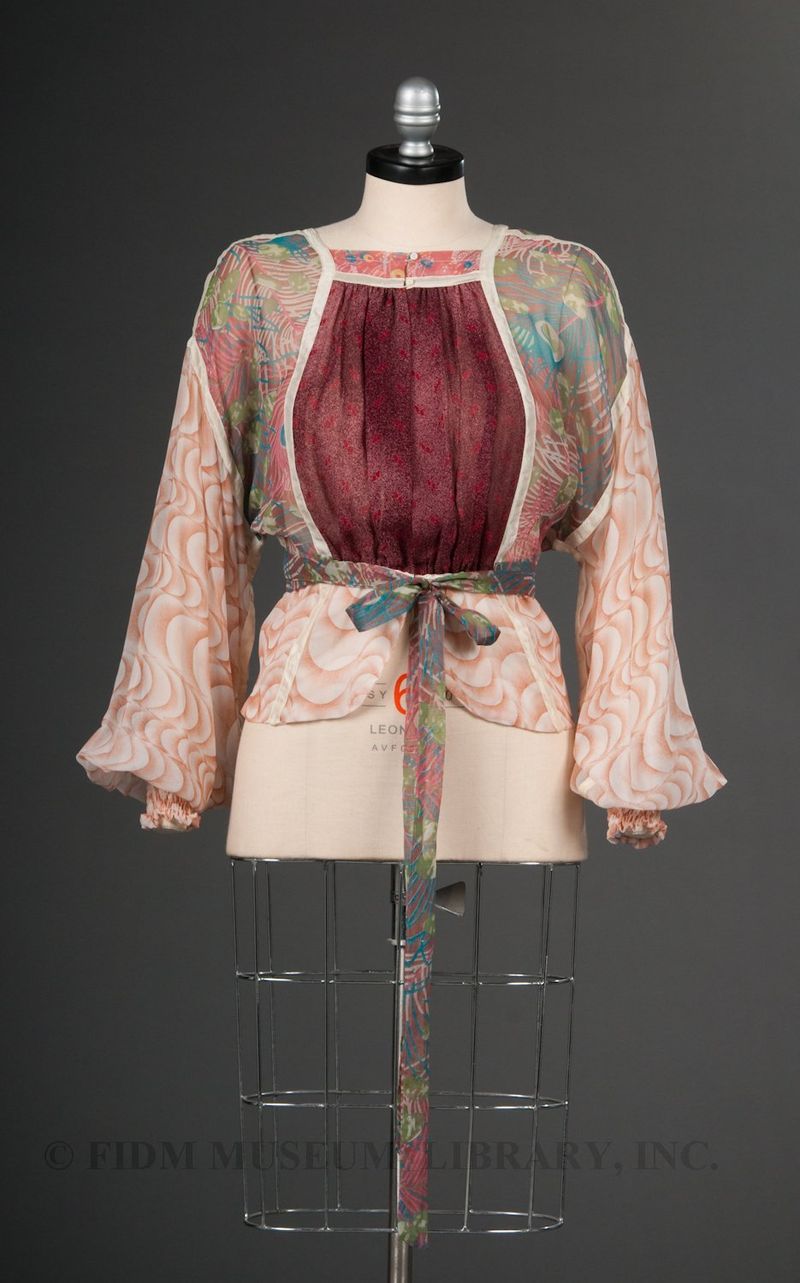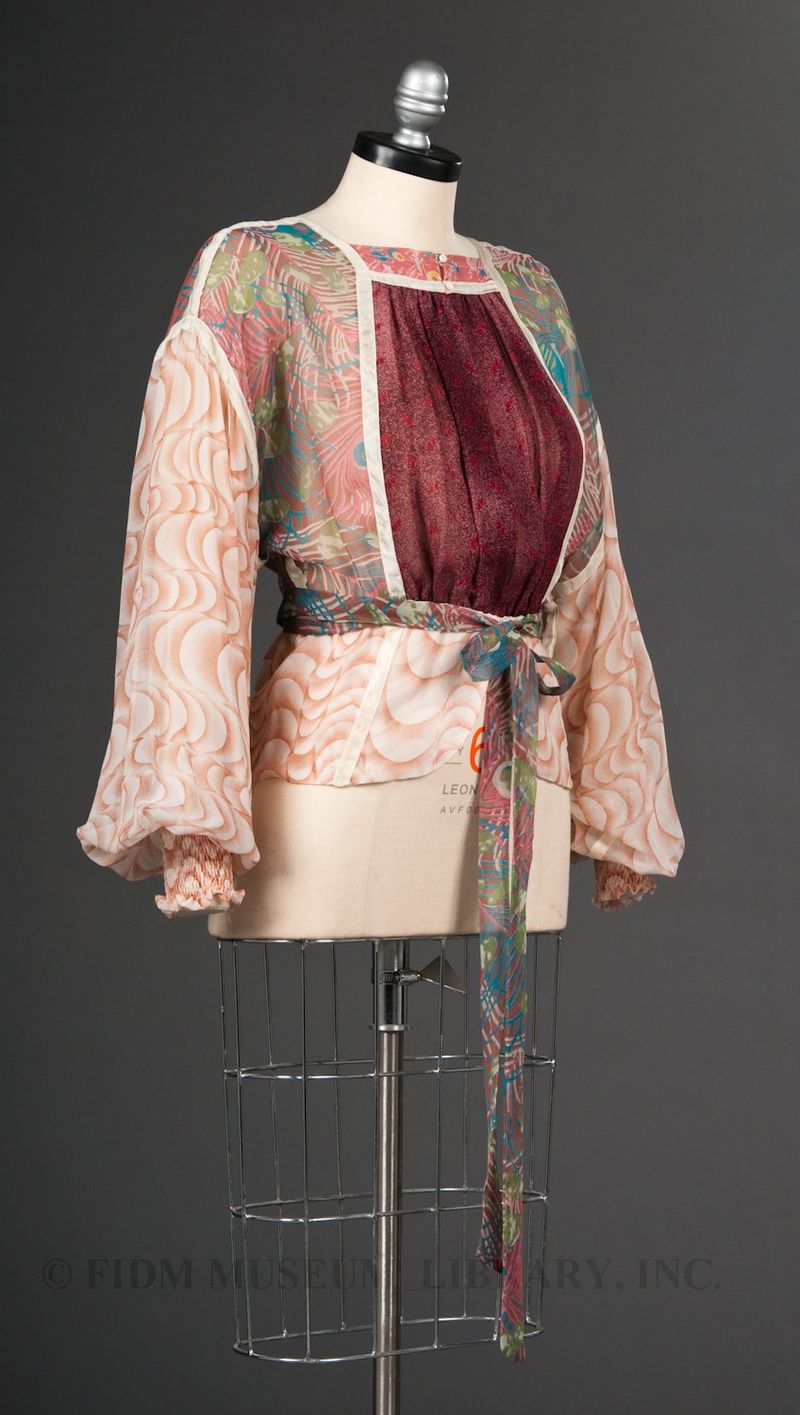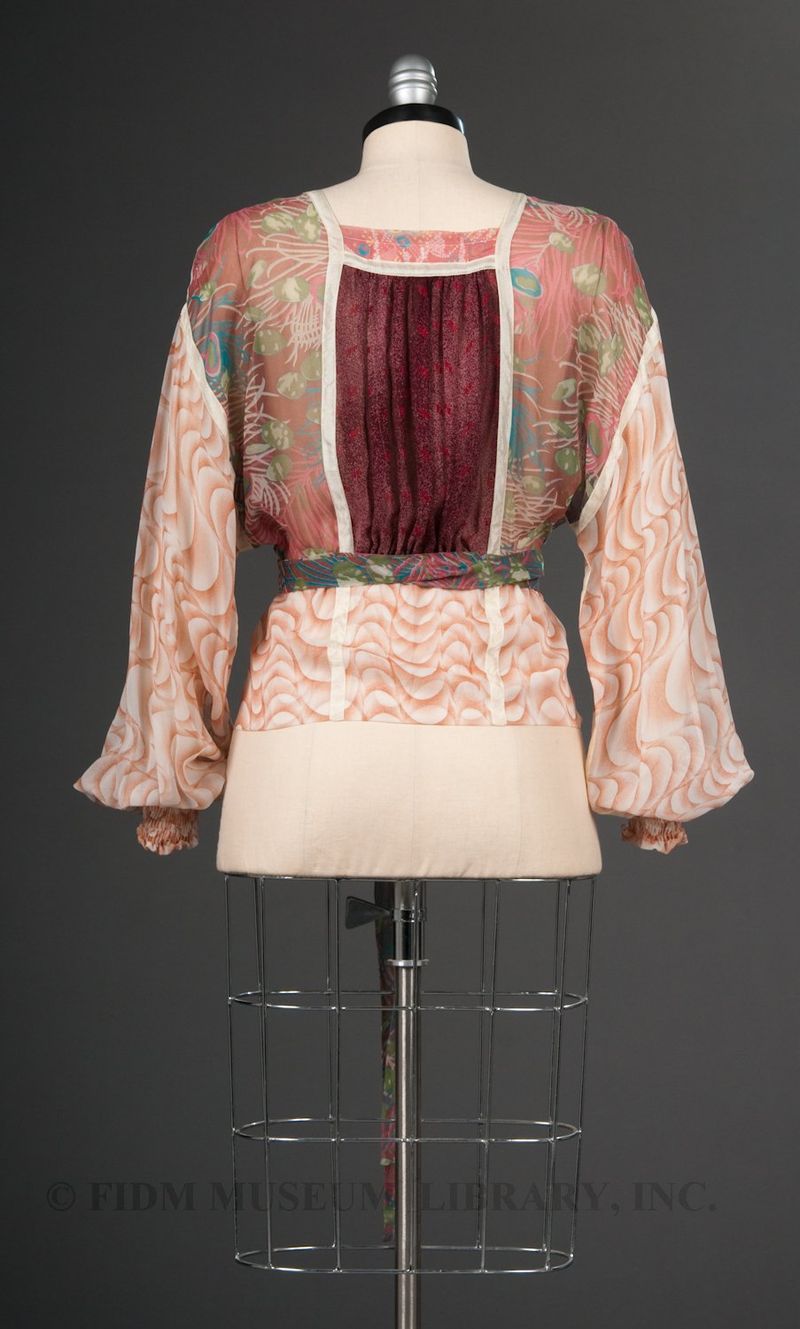Koos van den Akker
In a Koos van den Akker garment, fabric is always the focal point. Not just a single luxury fabric, but a riotous mix of fabric patches and panels combined into a surprisingly unified whole. According to the designer, his garments always "start with the fabric. Silhouettes come later."1 Though van den Akker apprenticed at Christian Dior from 1963-1965, his work demonstrates little interest in a precise fit, one of the traditional concerns of the haute couture. Nor is van den Akker interested in the interaction between garments and the human body, declaring that "shapes are not really what I'm interested in."2 Instead, van den Akker prefers to use his garments as an arena in which to explore the visual and tactile qualities of different textiles.
 Blouse c. 1976 Koos van den Akker Gift of Devra Korwin 85.423.1
Blouse c. 1976 Koos van den Akker Gift of Devra Korwin 85.423.1
Though van den Akker has rejected the haute couture emphasis on the relationship between the body and garment, his painstaking and detail-oriented design process reveals his training in the haute couture. When creating one-of-a-kind garments for a specific client or as a production prototype, van den Akker begins with a single pattern piece, which becomes the foundation for his fabric collages. Selecting from his extensive collection of fabrics, van den Akker chooses several fabrics of different textures, patterns and scale. Each piece is hand-cut and manipulated on the foundation until the desired effect is achieved, and then basted in place. After each element of the collage is basted to the foundation, applique, quilting, slashing, bias tape and other techniques or embellishments are used to create additional texture and visual appeal. If the garment is a production prototype, van den Akker's design assistants must translate the original into something that can be easily reproduced on a large scale. The FIDM Museum blouse seen here demonstrates the successful translation of a densely layered van den Akker textile collage into a simplified patchwork. Despite this simplification, it is still evocative of van den Akker's aesthetic.
One hallmark of van den Akker's work is an extensive use of bias tape. In the blouse pictured here, bias tape serves a dual purpose: to frame and highlight distinct fabrics and to cover seams. This mingling of function and form is seen throughout van den Akker's work. Other uses of bias tape in van den Akker's include cuff, collar or hem finishes and purely decorative meandering lines.
Because of their unique appearance, van den Akker's designs are sometimes termed "artwear." Emerging in the early 1970s, the artwear or art to wear movement focused on the creation of unique garments using labor intensive and difficult techniques borrowed from traditional textile crafts. Artwear creations are usually one-of-a-kind, often titled and not necessarily intended as functional clothing. You can see selected images from the 2005 exhibition Artwear: Fashion and Anti-Fashion, held at the Legion of Honor in San Francisco, here. Though the appearance and process of van den Akker's designs may invite comparisons to artwear, he resists the idea of himself as an artist. Van den Akker also refuses to call himself a fashion designer. Rather, he seems to like the idea of having a foot in both worlds, declaring his work "not fashion, not art--just inspired, modern collage with a lot of details."3
1 Coffin, David Page. "Koos, the Master of Collage." Threads (26) Dec. 1998/Jan 1990: 30 2 Ibid 3 Van den Akker, Koos. Foreward. Koos, Couture Collage By Linda Chang Teufel. Ohio: Dragon Threads, 2002: 11.

